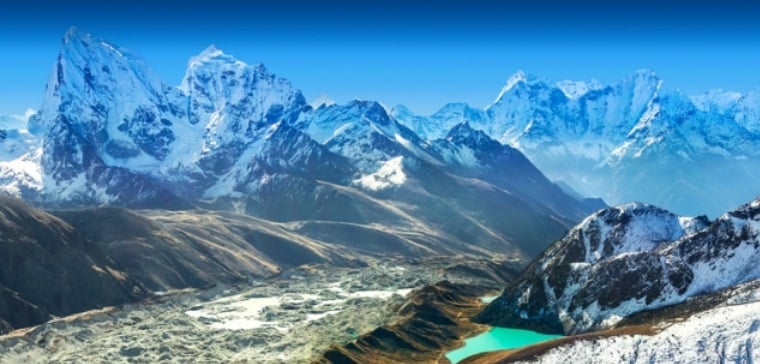Mount Lhotse
Mount Lhotse is located between the Tibet Autonomous Region and Nepal. Lhotse Mountain, located in the Himalayas, is also known as the E1 mountain massif among the people. It is known as the fourth highest mountain in the world after Everest, K2 and Kangchenjunga. The highest peak of the mountain, which consists of three peaks, is 8516 meters.
The World’s Fourth Highest Mountain: Mount Lhotse
Located between the Tibet Autonomous Region and Nepal, Mount Lhotse occupies a location in the Himalayas. It merges with Mount Everest from the 7600-meter-high southern part of Mount Lhotse. Because it is located south of Mount Everest, it was named Lhotse, which means “South Peak” in Tibetan.
Mount Lhotse consists of 3 peaks. Middle Lhotse with an altitude of 8516 meters and Lhotse Shar with a height of 8383 meters are located to the east of Lhotse Mountain, the highest peak of which is 8516 meters. The highest point of the mountain, 8516 meters, is known as Nuptse.
Known as the lower peak according to some climbers, Lhotse Shar is often considered a separate peak as well.
The road to the west of the mountain to the summit is called Lhotse Couloir. This road is a large ice valley and is the most challenging part to climb. At some points on the road, a steep 80-degree rise is seen suddenly. Therefore, it is recommended that experienced mountaineers go for climbing. Despite all this, it is easier to climb Mount Lhotse than Mount Everest. Therefore, it is preferred for practicing before climbing Everest.
First Climbs to Mount Lhotse and its Peaks
Swiss mountaineers Fritz Luchsinger and Ernest Reiss made the first ascent of Mount Lhotse. The first ascent to Lhotse Shar was in 1965 and the first ascent to Middle Lhatse was made in 1973. The main summit was climbed by Polish mountaineers Andrzej Zawada and Andrzej Heinrich on December 25, 1974.
Lhotse Mountain has become a mountaineering route for many mountaineers from different countries after experiencing their first climbing experience. Although there were failures in some cases, many climbers continued to climb to the summit without being affected by the negativities. According to the information calculated in 2008, a total of 371 mountaineers were able to reach the highest point of the mountain.
Mount Lhotse Visit Information
Before climbing Lhotse Mountain, a climbing permit is required by the Nepal Tourism Ministry. The average time for those who plan to climb the mountain is 56 days. In this process, there are various camping areas where mountaineers can rest and stay. The needs of the visitors such as showers, WCs, snacks, food, beverages and heating are met in the camping areas.
Lhotse Mountain has no specific entrance fee. Apart from professional mountaineers, those who want to climb the mountain should join the tours. Many tour companies provide services for climbing Lhotse Mountain. Through tour companies, many activities such as trekking, skiing and climbing can be done and fun can be spent. Tour fees start from $ 8500 and increase according to their qualifications.
The most ideal time period preferred by those who plan to climb Lhotse Mountain is the spring months.
As some of the snow melts in the spring, the climb is easier. However, the presence of icing in certain regions can be experienced in four seasons of the year. That’s why it’s good to be prepared.
Where is Lhotse located?
What is the height of Lhotse?
What does the name “Lhotse” mean?
When and by whom was Lhotse first climbed?
What is Lhotse’s connection to Mount Everest?
Does Lhotse have additional summits?
Why is climbing Lhotse challenging?
What are the ecological features of Lhotse?
Are there any tragic events associated with Lhotse?
What are the psychological effects of climbing Lhotse?
You can see Lhotse Mountain on Google Map and Photos
You may also want to learn about Turkey’s highest mountain, Mount Ararat. Please click on the link to read more about majestic Mount Ararat.





